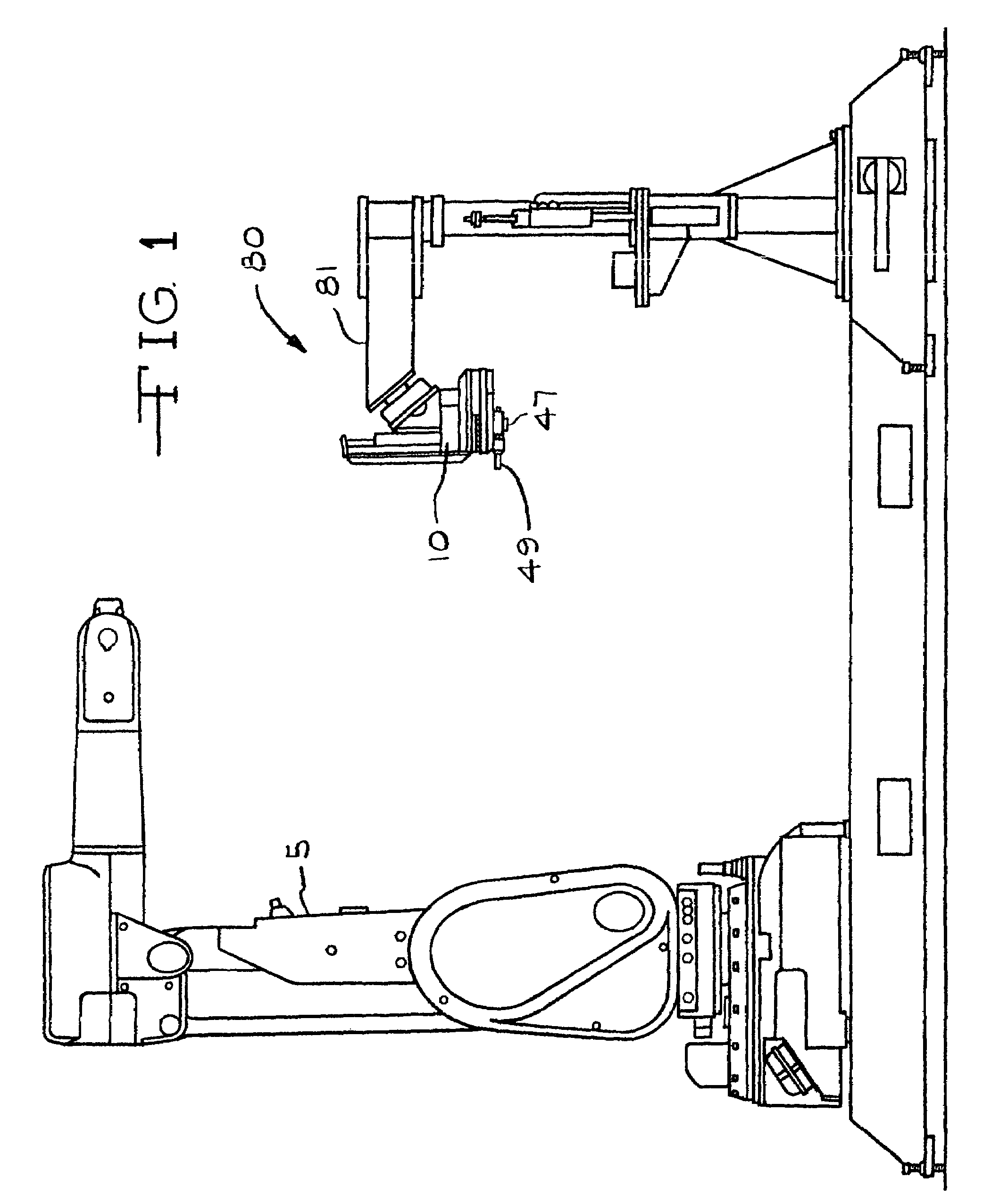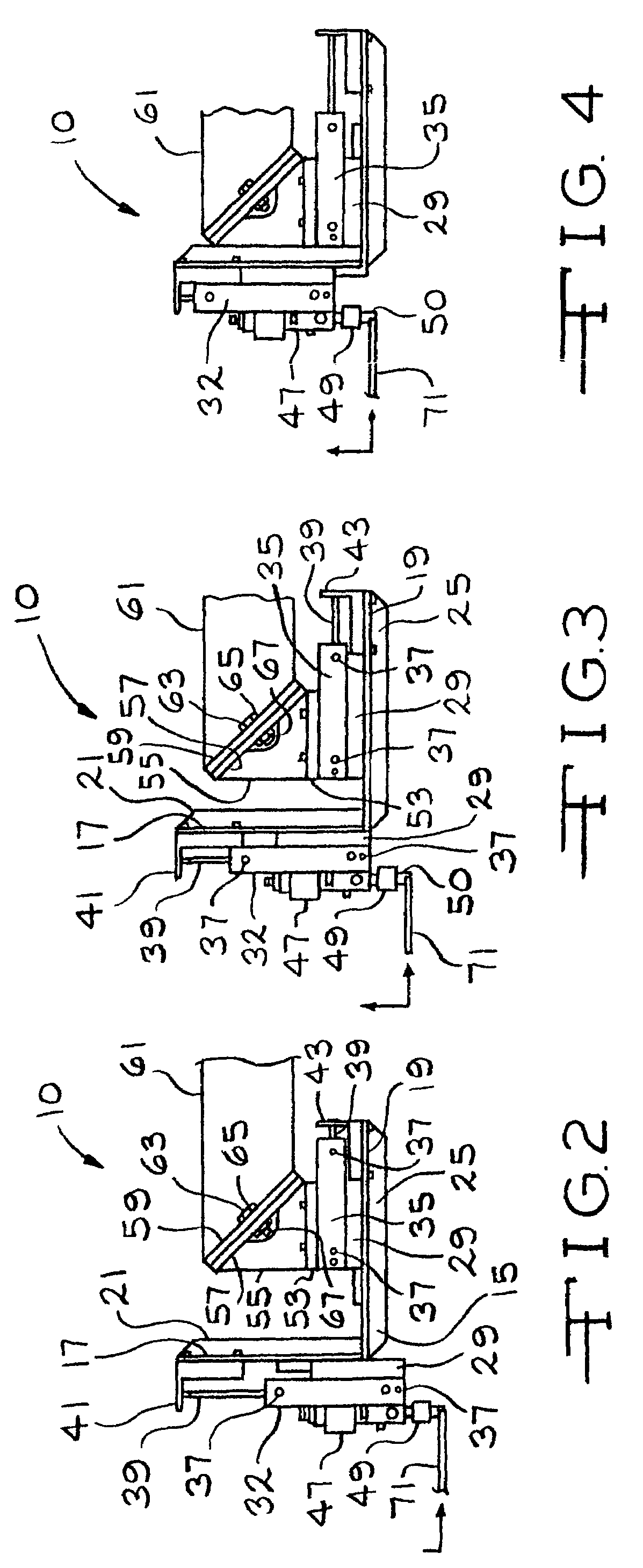Automated priming station
- Summary
- Abstract
- Description
- Claims
- Application Information
AI Technical Summary
Benefits of technology
Problems solved by technology
Method used
Image
Examples
Embodiment Construction
[0064]The invention is directed to an automated system for applying a fluid to an object. The automated system utilizes a compliance mechanism that enhances the ability of the automated system to retain contact with the object. The automated system is easily interfaced with robots or other automated devices such as programmable fluid dispensing systems. The features of the invention will be more readily understood by referring to the attached drawings in combination with the following description of the invention.
[0065]FIG. 1 shows the automated system 80 of the present invention where a fluid dispenser 47 having an applicator tip 49 is used to apply a fluid to an object (not shown). A compliance mechanism 10 is utilized to assist in maintaining the applicator tip 49 of the fluid dispenser 47 in contact with the object during the coating operation. A robot 5 having an arm 13 is utilized to advance the object past the applicator tip 49 during the coating operation. The fluid dispense...
PUM
| Property | Measurement | Unit |
|---|---|---|
| Diameter | aaaaa | aaaaa |
| Flexibility | aaaaa | aaaaa |
Abstract
Description
Claims
Application Information
 Login to View More
Login to View More - R&D
- Intellectual Property
- Life Sciences
- Materials
- Tech Scout
- Unparalleled Data Quality
- Higher Quality Content
- 60% Fewer Hallucinations
Browse by: Latest US Patents, China's latest patents, Technical Efficacy Thesaurus, Application Domain, Technology Topic, Popular Technical Reports.
© 2025 PatSnap. All rights reserved.Legal|Privacy policy|Modern Slavery Act Transparency Statement|Sitemap|About US| Contact US: help@patsnap.com



